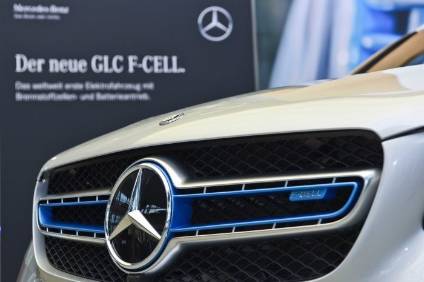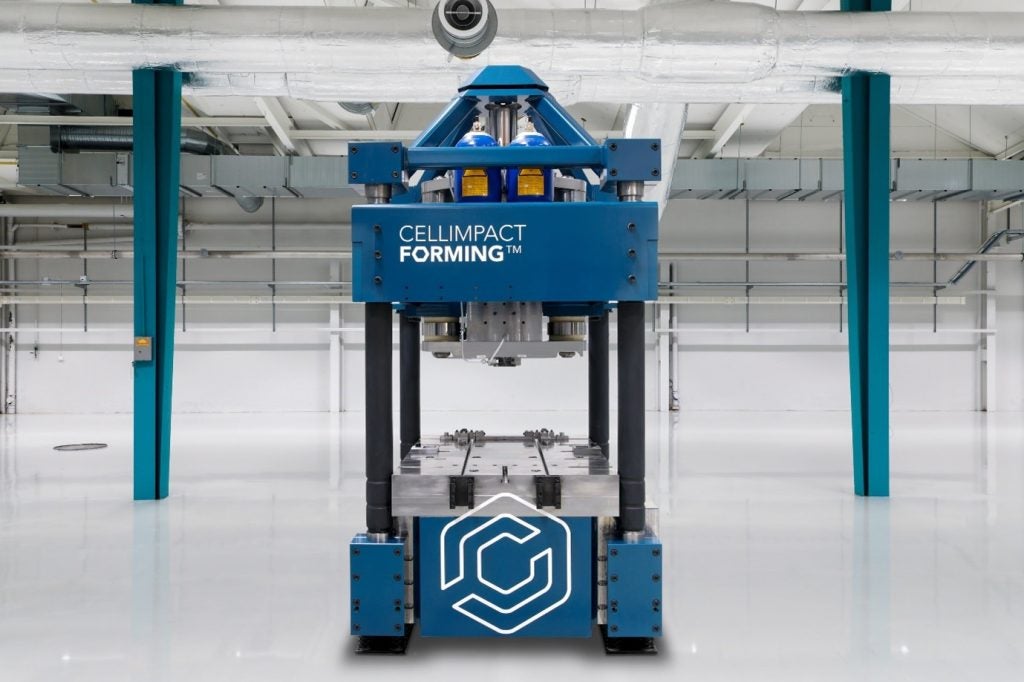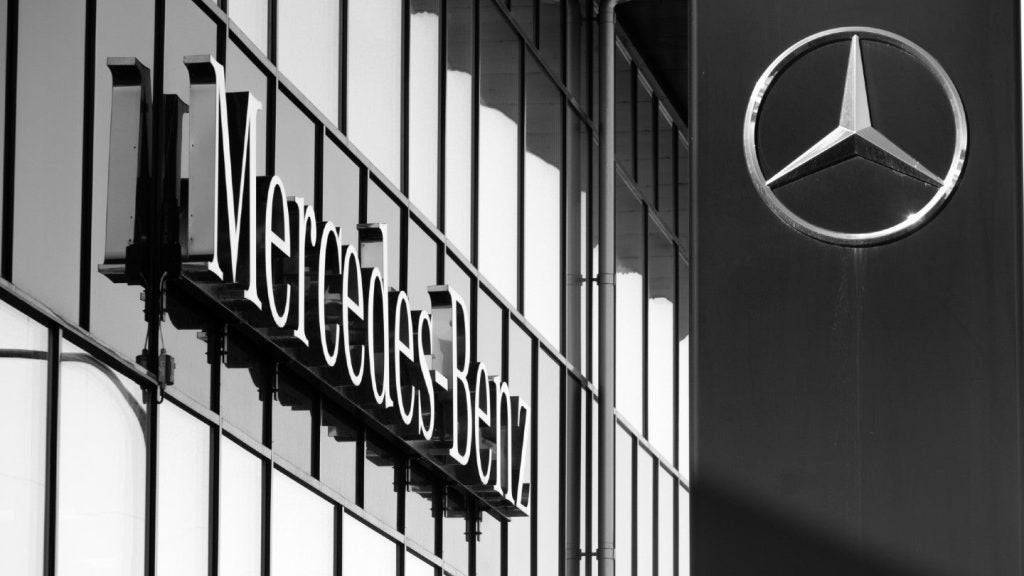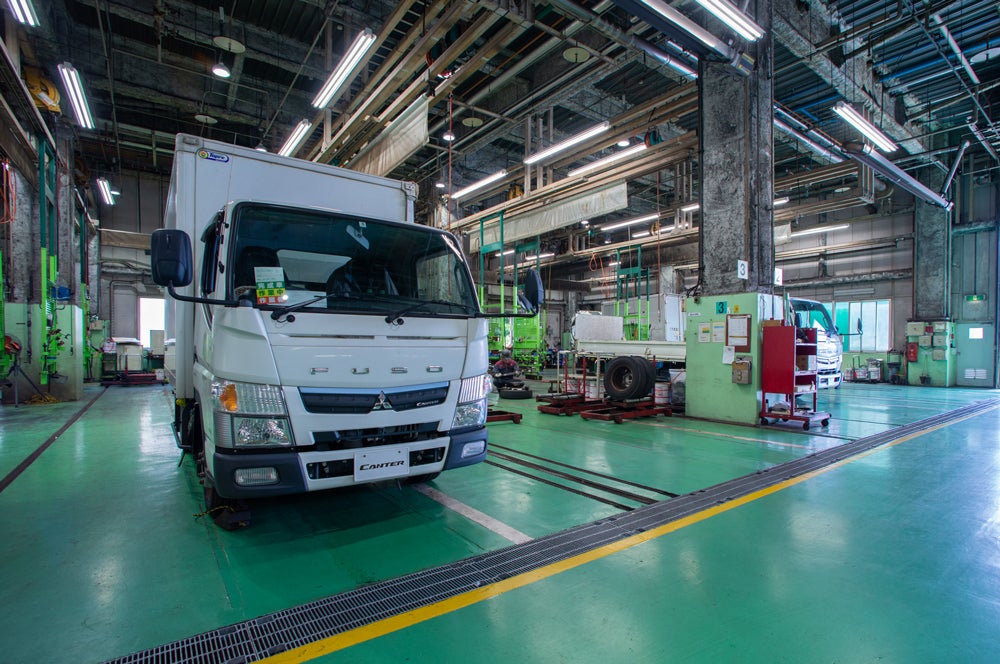
Mercedes-Benz has launched an electric vehicle featuring hydrogen fuel cell and conventional plug-in hybrid electric vehicle (PHEV) battery technology. The first sales are to selected customers in Germany.
Mercedes says the powertrain set-up for the vehicle is unique as it features both fuel cells and a battery drive which can be charged externally using plug-in technology. Alongside various national and regional ministries as well as the National Organisation Hydrogen (NOW) and H2 Mobility, the first customers in the German market also include Deutsche Bahn, the German national railway operator.
Further handovers will also be made this year, including to the companies Air Liquide, Shell, Linde AG and also the cities of Stuttgart and Hamburg. Other business as well as private customers in Germany will also be able to rent access to the GLC F-Cell from the spring of 2019 via Mercedes-Benz Rent.
The Mercedes-Benz GLC F-Cell is described as a ‘unique plug-in hybrid’ as apart from electricity it can also run on pure hydrogen. Mercedes says the SUV is an all-electric vehicle suitable for everyday use which emits no CO2 emissions whatsoever during operation. The interplay between battery and fuel cell, a long range and short refuelling times also make the GLC F-Cell a ‘vehicle which boasts high everyday practicality’, it is claimed.
Two carbon-fibre-encased tanks in the vehicle floor hold 4.4 kg of hydrogen. Under 700-bar tank technology, the hydrogen supply can be replenished within just three minutes – as quickly as is customary when refuelling a combustion-engined car. With a hydrogen consumption of around 1 kg/100 km, the GLC F-Cell achieves around 430 hydrogen-based kilometres in the NEDC cycle; in hybrid mode it additionally delivers up to 51 km on a fully charged battery.
Mercedes says the plug-in fuel cell drive combines the advantages of both zero-emission drive technologies and, thanks to its intelligent operating strategy, ‘continuously optimises the use of both energy sources in line with the current operating situation’.
How well do you really know your competitors?
Access the most comprehensive Company Profiles on the market, powered by GlobalData. Save hours of research. Gain competitive edge.

Thank you!
Your download email will arrive shortly
Not ready to buy yet? Download a free sample
We are confident about the unique quality of our Company Profiles. However, we want you to make the most beneficial decision for your business, so we offer a free sample that you can download by submitting the below form
By GlobalDataThere are four operating modes:
- HYBRID: the vehicle draws power from both energy sources. Power peaks are handled by the battery, while the fuel cell runs in the optimum efficiency range.
- F-CELL: the state of charge of the high-voltage battery is kept constant by the energy from the fuel cell. Only hydrogen is consumed. This mode is ideal for steady cruising over long distances, according to Mercedes.
- BATTERY: the GLC F-CELL runs all-electrically and is powered by the high-voltage battery. The fuel cell system is not in operation – the ideal mode for short distances.
- CHARGE: charging the high-voltage battery has priority, for example in order to recharge the battery for the maximum overall range prior to refuelling with hydrogen or to create power reserves.
In all operating modes, the system features an energy recovery function, which makes it possible to recover energy during braking or coasting and to store it in the battery.
Marketing in hydrogen cities
Mercedes says that in view of the new technology and the fact that the hydrogen filling station network has only just started to expand, the market launch of the GLC F-CELL is taking place in selected metropolitan regions. The focus is on major cities which are ‘already comparatively well equipped with hydrogen filling stations’, such as Stuttgart, Düsseldorf, Berlin, Hamburg, Frankfurt, Munich and Cologne. At market launch the SUV will be handed over successively to selected customers in Germany.
The GLC F-Cell will be offered exclusively in the form of a full-service rental model. This will include all maintenance and possible repairs together with a comprehensive warranty package covering the entire rental period.
From the spring of 2019, other business as well as private customers will also be able to experience the new fuel cell technology and rent the vehicle via Mercedes-Benz Rent from one of the seven GLC F-Cell outlets throughout Germany. The GLC F-Cell will be available for both short and long-term rental via the Premium Car Rental service from Mercedes-Benz.
Hydrogen infrastructure
Mercedes says that together with its partners in the H2 Mobility joint venture, Daimler has drawn up a plan of action for more hydrogen fuel stations in Germany. By the end of 2019, the hydrogen refuelling station network is expected to grow from its current level of 50 to some 100 stations. The long-term objective of the partners is a network of up to 400 hydrogen refuelling stations. Similar infrastructure projects are being promoted in Europe, the USA and Japan.
Daimler is part of Hydrogen Mobility Europe (H2ME), a lighthouse project promoted by FCH JU which combines Europe’s leading initiatives in the field of hydrogen mobility – in Germany, France, the United Kingdom and Scandinavia. Via H2ME, the FCH JU is promoting the expansion of a large-scale H2 filling station infrastructure and the development of fuel cell vehicles such as the GLC F-CELL with the goal of enabling emission-free driving all over Europe. Daimler AG has received funding from the Fuel Cells and Hydrogen 2 Joint Undertaking under grant agreement No 671438 and No 700350. This Joint Undertaking receives support from the European Union’s Horizon 2020 research and innovation programme, Hydrogen Europe and Hydrogen Europe Research.







